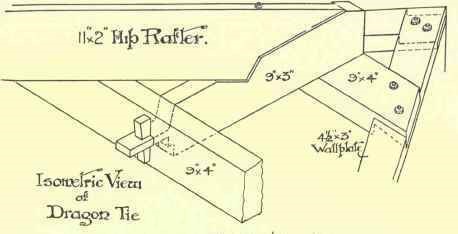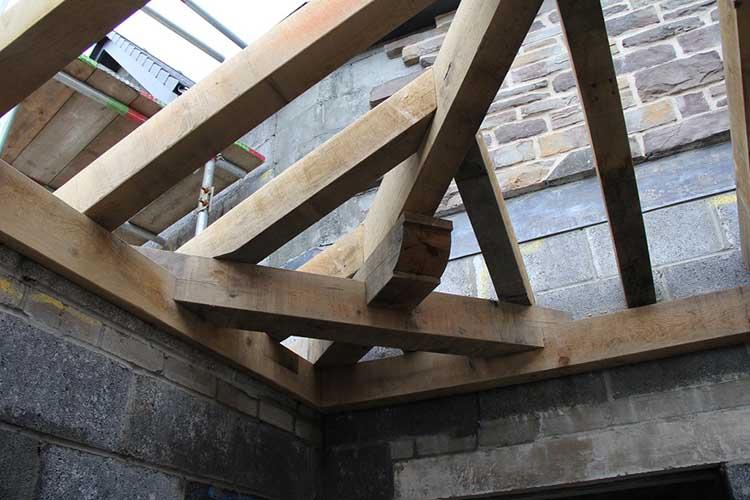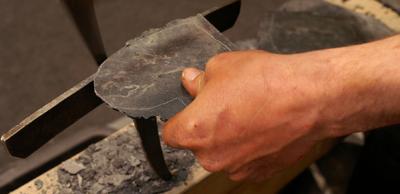“My Dad told me about them!”: Dragon ties
Dragon tie with simple decorative detail (courtesy of castleringoakframe.co.uk)
When traditional roof construction was the norm, a dragon tie was often incorporated beneath the hip rafter, particularly where they were carrying purlins. The hip therefore had a much heavier load.
The dragon tie could be constructed in a number of ways; from a simple diagonal strut made of timber or plywood fixed to the hip with a metal strap. Or, as shown in the photo, it could be a lap jointed angle tie notched into the hip with an exposed detail.
But what does a dragon tie do?
It prevents the wall plate from spreading where the load transferred down the roof is at its greatest. A dragon tie is very effective as it creates a mechanical joint where everything pulls against one another to reinforce the corner.
You may recall the changes to Building Regulations Approved Document Part A (structure) in 2004 which introduced additional controls for re-roofing work where loads were increased by more than 15%.
This was as a direct result of problems in the 1990’s caused by re-covering slate roofs with newer concrete roof tiles. The extra weight caused the wall plate to be pushed out, usually together with the top three courses of masonry, as the roof started to spread with the additional weight.
 A long history
A long history
The dragon tie technology developed in the 16th Century (diagram courtesy of chestofbooks.com) alongside timber frame construction, stood the test of time long before this issue arose. It’s still seen today as a feature detail in green oak construction, particularly where the roof carcass is exposed internally.
Browse our "My dad told me..." articles
Please Note: Every care was taken to ensure the information was correct at the time of publication. Any written guidance provided does not replace the user’s professional judgement. It is the responsibility of the dutyholder or person carrying out the work to ensure compliance with relevant building regulations or applicable technical standards.
Sign up to the building bulletin newsletter
Over 48,000 construction professionals have already signed up for the LABC Building Bulletin.
Join them and receive useful tips, practical technical information and industry news by email once every 6 weeks.
Subscribe to the Building Bulletin




Comments
(No subject)
Submitted 7 years 3 months ago
(No subject)
Submitted 7 years 3 months ago
Dragon Ties
Submitted 5 years 6 months ago
Webmaster note
Submitted 7 years 3 months ago
Dragon tie
Submitted 2 years 11 months ago
Add new comment